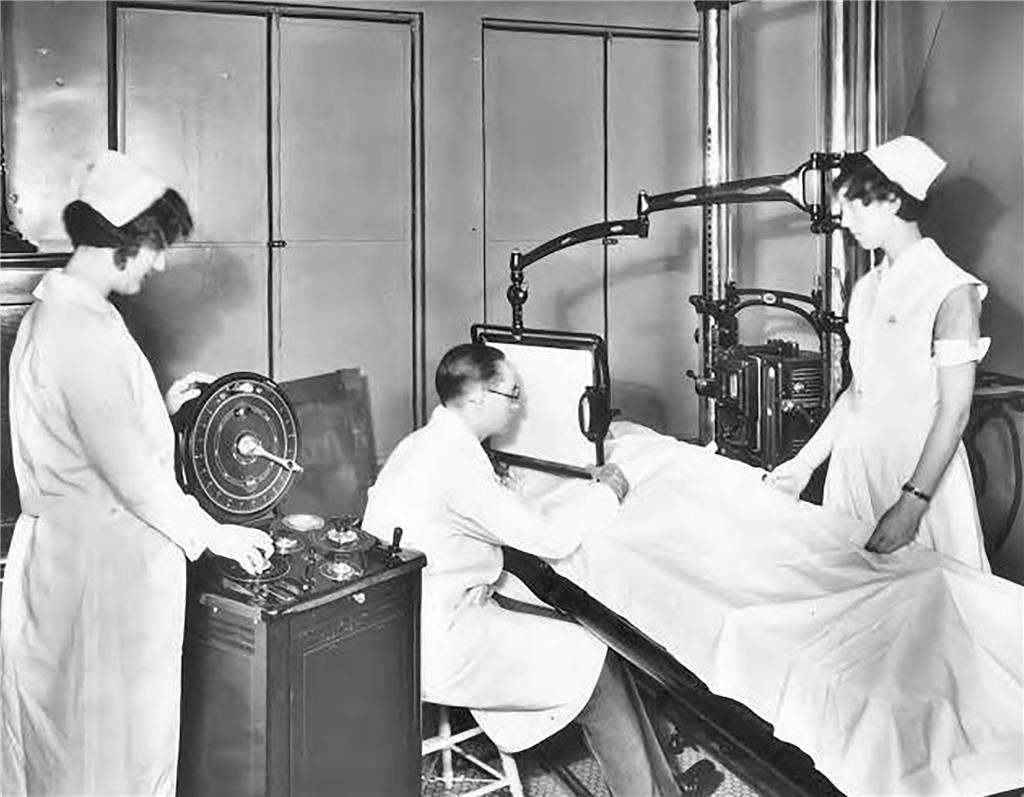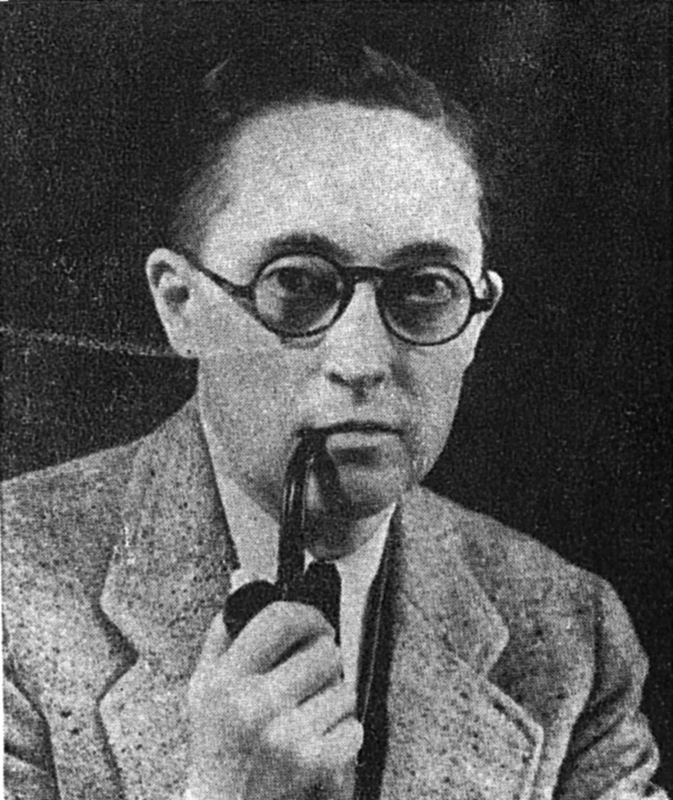"Each of us must take into account the raw material which heredity dealt us at birth and the opportunities we have had along the way, and then work out for ourselves a sensible evaluation of our personalities and accomplishments."
Alan L. Hart (1890 – 1962) was a US American 20th-century physician, radiologist, disease researcher, and novelist who pioneered the use of x-ray in detection for tuberculosis. He spent the latter part of his career in public health, undoubtedly saving many thousands of lives across the country expanding tb services and education throughout rural areas. In 1917 Hart was one of the first people to undergo a gender affirming hysterectomy in the United States, and is the first documented case of a female to male transition in medical literature in the English speaking world.
“I had to do it. For years I had been unhappy. With all the inclinations and desires of the boy I had to restrain myself to the more conventional ways of the other sex. I have been happier since I made this change than I ever have in my life, and I will continue this way as long as I live’
interview with Hart about his hysterectomy
Hart begin expressing himself as a boy starting at least age 4, and was largely accepted by his family as male, with his grandfathers obituary in 1921 listing Hart as his grandson. A family friend of his stated in a 1921 interview “Young Hart was different, even then. Boys' clothes just felt natural. Hart always regarded himself as a boy and begged his family to cut his hair and let him wear trousers. Hart disliked dolls but enjoyed playing doctor. He hated traditional girl tasks, preferring farm work with the menfolk instead. The self reliance that became a lifelong trait was evident early: once when he accidentally chopped off his fingertip with an axe, Hart dressed it himself, saying nothing about it to the family.” During childhood school, Hart wrote most of his assignments under his first chosen name of Robert Allen Bamford Jr.
Hart received a total of 4 degrees in his life. He received a pre med degree in 1912 from Portland, Oregon’s Lewis & Clark College, then known as Albany College, followed by a medicine degree doctorate from the University of Oregon Medical Department in Portland (now Oregon Health & Science University) in 1917. His doctorate was originally issued under "Hart, [deadname] aka Robert L., M.D.”. which prompted a legal name change in 1918. He took his first medical job at a Red Cross hospital at this point. In 1928, Hart received a master’s degree in radiology from the University of Pennsylvania and was named director of radiology at Tacoma General Hospital. After working for several years as a tuberculosis consultant in Washington and Idaho, Alan Hart moved with his wife to Hartford, Connecticut, where he received a master’s degree in public health from Yale University in 1948. Around this time, Hart began taking testosterone and is described as having a deeper voice and being able to grow facial hair as a result.
TUBERCULOSIS

Hart devoted much of his career to research and treatment of tuberculosis. By the dawn of the 19th century, tuberculosis—or consumption—had killed one in seven of all people that had ever lived. Throughout much of the 1800s, consumptive patients sought "the cure" in sanatoriums, where it was believed that rest and a healthful climate could change the course of the disease. In 1882, Robert Koch's discovery of the tubercule baccilum revealed that TB was not genetic, but rather highly contagious; it was also somewhat preventable through good hygiene. After some hesitation, the medical community embraced Koch's findings, and the U.S. launched massive public health campaigns to educate the public on tuberculosis prevention and treatment. TB usually attacked victims' lungs first; Hart was among the first physicians to document how it then spread, via the circulatory system, causing lesions on the kidneys, spine, and brain, eventually resulting in death. With no cure for the disease in its advanced stages the only hope for sufferers was early detection.
X-rays, or Roentgen rays as they were more commonly known until World War Two, had been discovered only in 1895, when Hart was five years old. In the early twentieth century they were used to detect bone fractures and tumors, but Hart became interested in their potential for detecting tuberculosis. Since the disease often presented no symptoms in its early stages, X-ray screening was invaluable for early detection. Even rudimentary early X-ray machines could detect the disease before it became critical. This allowed early treatment, often saving the patient's life. It also meant sufferers could be identified and isolated from the population, greatly lessening the spread of the disease. By the time antibiotics were introduced in the 1940s, doctors using the techniques Hart developed had managed to cut the tuberculosis death toll down to one fiftieth of what it had previously been.
In 1937, Hart was hired by the Idaho Tuberculosis Association and later became the state's Tuberculosis Control Officer. He established Idaho's first fixed-location and mobile TB screening clinics and spearheaded the state's war against tuberculosis. Between 1933 and 1945 Hart traveled extensively through rural Idaho, covering thousands of miles while lecturing, conducting mass TB screenings, training new staff, and treating the effects of the epidemic. An experienced and accessible writer, Hart wrote widely for medical journals and popular publications, describing TB for technical and general audiences and giving advice on its prevention, detection, and cure. At the time the word "tuberculosis" carried a social stigma akin to venereal disease, so Hart insisted his clinics be referred to as "chest clinics", himself as a "chest doctor", and his patients as "chest patients". Discretion and compassion were important tools in treating the stigmatised disease.
In 1943, Hart, now recognized as pre-eminent in the field of tubercular roentgenology, compiled his extensive evidence on TB and other X-ray-detectable cases into a definitive compendium, These Mysterious Rays: A Nontechnical Discussion of the Uses of X-rays and Radium, Chiefly in Medicine, still a standard text today. The book was translated into Spanish and several other languages
PBS - TB in America: 1895-1954
Join our public Matrix server! https://matrix.to/#/#tracha:chapo.chat
As a reminder, be sure to properly give content warnings and put sensitive subjects behind proper spoiler tags. It's for the mental health of not just your comrades, but yourself as well. Here is a screenshot of where to find the spoiler button.



🫂
I wish I could do more
Have you tried using an aftershave? It can help keep the skin healthy so it doesn't hurt as much.Also how do you shave? You might already know all that I know, but if you don't I want to help. I have pretty coarse hair and really sensitive skin, so I've picked up a few tricks.
spoiler
No, I haven't tried that. I've also got acne so I'm sure that contributes to it.For my face I just use an electric razor, I tried using a manual once but it got ruined after the first time. When I tried to use it again it just pulled at my face so bad regardless of how much conditioner I used.
I can't even shave properly :cri:
spoiler
Oh electric is never gonna be as good as a razor. There's also a shaving cream I use that is supposed to be for your body, but I use it for my face. It's called Coochy (dumb name) it's pricey but the moisturizer in it is nice. I know a lot of trans women shave against the grain for smoother skin, it's not great for your skin so I wouldn't recommend it. Your skin will get used to the bumps eventually but there is nice creams you can help to prevent razor burnspoiler
you definitely need to get a razor and also, learned from reddit and by personal experience, cold shave. As in pour cold water on your face until it's cold enough and shave against the grain. The razor should also be cold. You are never going to get a cleaner shave, it even shaved the annoying little hairs under my chin that only the laser has gotten rid of previously.You will need to moisturize afterwards, probably aftershave too, but it's well worth it.
spoiler
Oh huh, I thought you were supposed to use warm water when shaving. I'll try that next time. I still need to put shaving cream ~~I'm using conditioner because that's what I have~~ on before actually shaving though, right? So cold water, then conditioner, then the razor? Thank you.spoiler
basically yeah
yeah, but for shaving there's really no benefit from my understanding and reading through these niche hobby subreddits ((which is the only thing reddit is good for)also yes, there's a shaving subreddit for the real freaks) the cold water however makes your hair stand up, and if the razor is cold there's like a miniscule sharpening because the atoms slow down. there's some more stuff about it here cw: reddit and here's some other nerd talking about it
there's some more stuff about it here cw: reddit and here's some other nerd talking about it
spoiler
I had no clue! I'm trying this next time I shave.spoiler
Having the right equipment and technique makes a gigantic difference.I recently treated myself to a new safety razor, artisanal shaving soap+aftershave, bunch of different razor blades and a new brush and I went from being able to shave once per week to almost every single day. I also did a bunch of research into what technique fits my skin the best, which also helped me reduce irritations a lot.
If you want to learn more as well, I can recommend this forum https://www.badgerandblade.com/forum/forums/ as well as this sub https://old.reddit.com/r/wicked_edge/ or if you are more of a visual person either geofatboy or RazorEmporium on youtube.
A Reddit link was detected in your comment. Here are links to the same location on alternative frontends that protect your privacy.